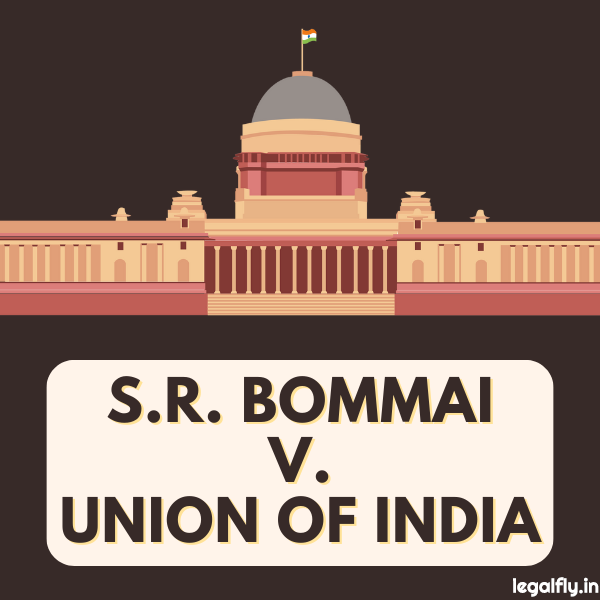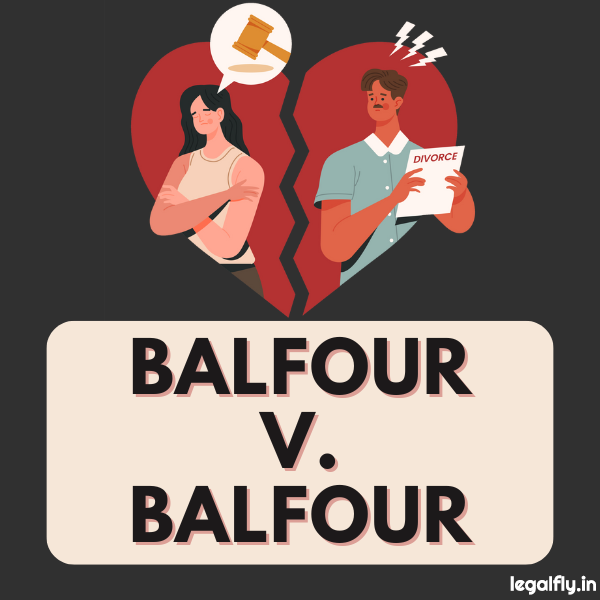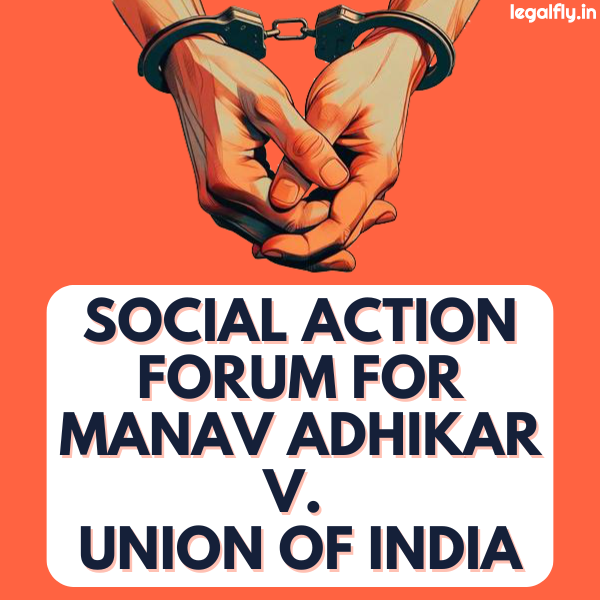Table of Contents
Case Name: S.R. Bommai v. Union of India
Court: Supreme Court of India
Year: 1994
Citation: 1994 AIR 1918, 1994 SCC (3) 1
Introduction to S.R. Bommai v. Union of India
The case of S.R. Bommai v. Union of India (1994) is a landmark decision by the Supreme Court of India that fundamentally changed how the President’s Rule under Article 356 is applied in the country. This judgement restricted the arbitrary use of Article 356, which allows the central government to dismiss state governments, ensuring a more balanced centre-state relationship. The case arose from the dismissal of S.R. Bommai’s government in Karnataka due to the alleged loss of majority, an action challenged in Court for its constitutional validity.
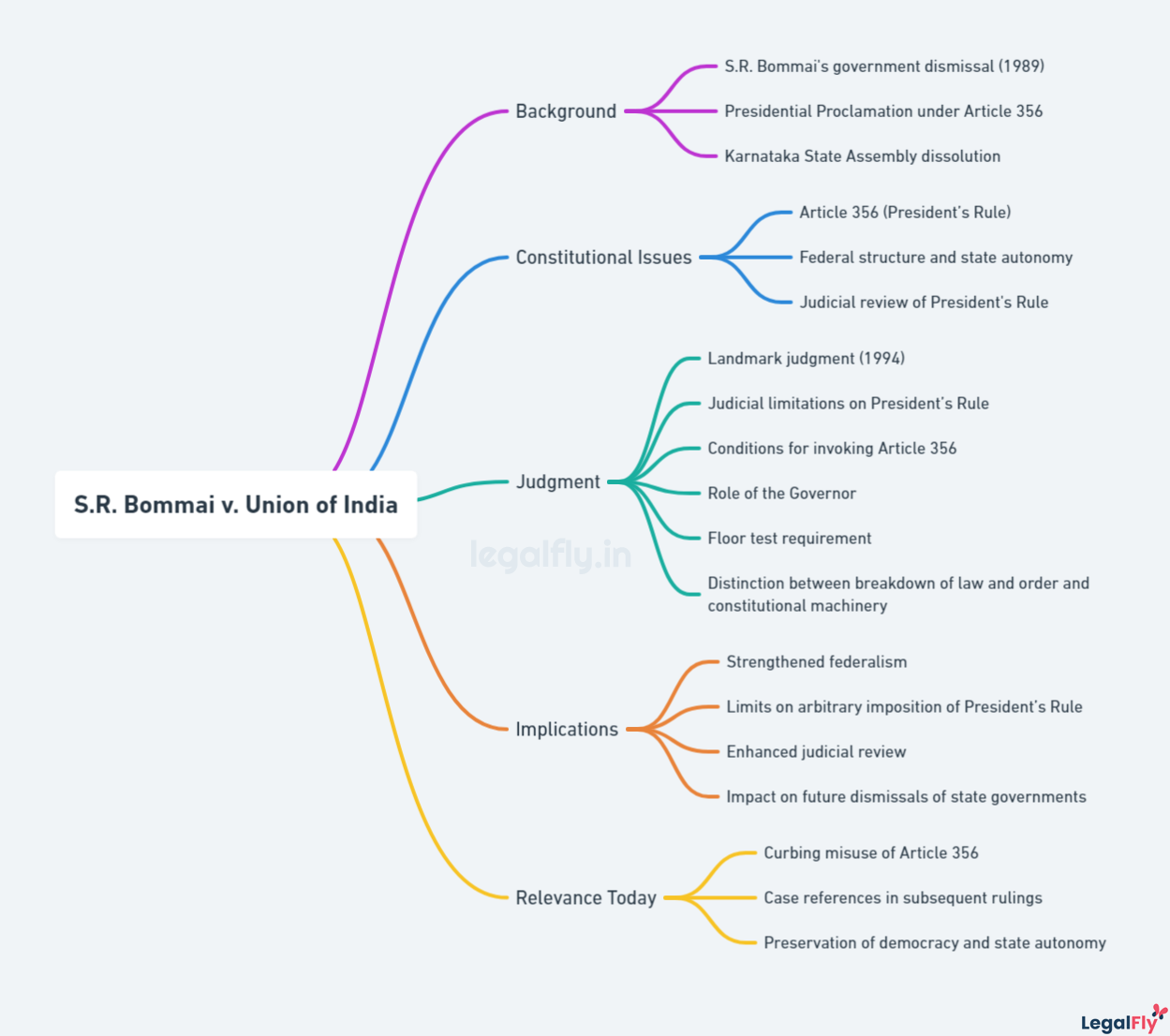
Before this ruling, the central government often imposed President’s Rule in opposition-ruled states, leading to political instability. The Supreme Court’s verdict established that misuse of Article 356 would be subject to judicial review, ensuring that states could no longer be dismissed on narrow grounds. This decision was a turning point in Indian federalism, promoting a more stable and fair political environment between states and the central government.
The implications of this case were far-reaching, necessitating a careful re-evaluation of the Centre’s authority over states. The judgement fostered greater autonomy and stability within state governments by curbing the central government’s power. This has been crucial in maintaining a balanced federal structure in India and has set a precedence that continues to influence the political landscape.
Key Takeaways
- S.R. Bommai v. Union of India restricted the misuse of Article 356.
- The judgement enabled judicial review of the President’s Rule.
- The case strengthened the federal structure by balancing centre-state relations.
Historical Context and the Genesis of S.R. Bommai v. Union of India
The S.R. Bommai v. Union of India case revolved around the misuse of Article 356, which allows the imposition of President’s Rule in states. It explored the power dynamics between the central and state governments, specifically scrutinising actions taken in Karnataka.
Origins and Political Background
In the late 1980s and early 1990s, Indian politics was marked by intense party rivalries and frequent shifts in government. S.R. Bommai, representing the Janata Dal, became the Chief Minister of Karnataka in August 1988. However, his tenure was short-lived. In 1989, the central government, led by the Congress Party, invoked Article 356 to dismiss his government, citing a loss of majority due to defections.
This decision was significant as it highlighted the contentious use of Article 356, which grants the President the power to dissolve state governments if they are deemed incapable of functioning according to constitutional norms. The Governor’s role also came under scrutiny, as he recommended the dismissal of Bommai’s government.
The broader political landscape of this era saw the Janata Party, Congress, and other regional parties vying for control. Article 356 became a political tool, often criticised for undermining federalism. This backdrop set the stage for the key judicial examination in the S.R. Bommai case.
Details of the S.R. Bommai Case
In 1994, the Supreme Court of India delivered its landmark judgement in the S.R. Bommai v. Union of India case. The Court held that the dismissal of Bommai’s government was not justified. It declared that the use of Article 356 should be factual, not arbitrary, and subjected to judicial review.
The ruling imposed strict limitations on the central government’s power to misuse Article 356. It mandated that the President’s Rule must be based on relevant material evidence and be justifiable in Court. The case reinforced the doctrine of the basic structure of the Constitution, emphasising federalism and democratic governance.
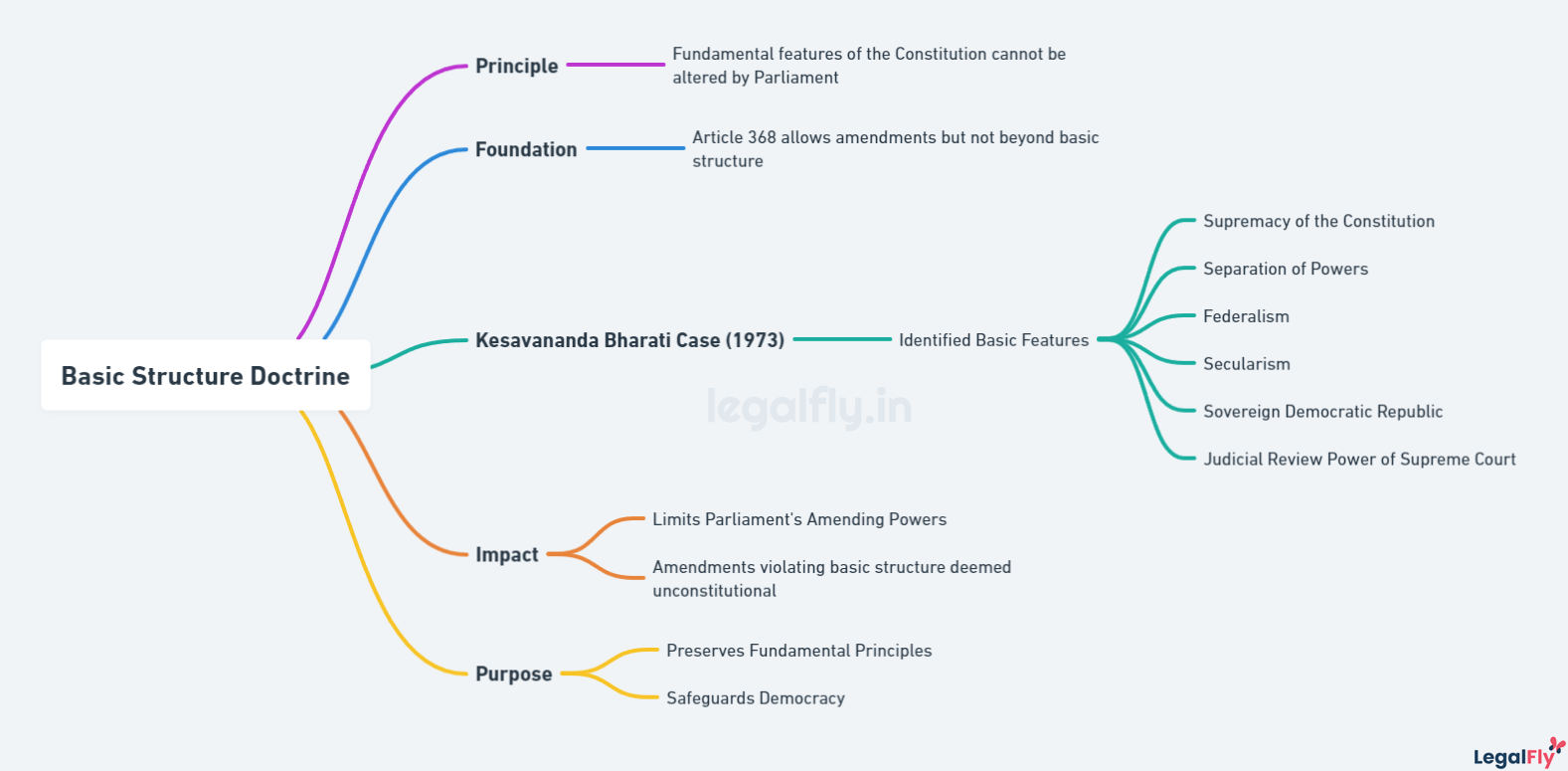
This judgement had a lasting impact on Centre-State relations, restricting the central government’s ability to dissolve state administrations. It remains a cornerstone in the interpretation of constitutional law in India.
Constitutional Provisions and the Role of Article 356
Article 356 of the Indian Constitution empowers the central government to impose President’s Rule in a state. This provision comes into play when the constitutional machinery of a state fails, allowing for federal intervention.
Understanding Article 356 of the Constitution
Article 356 gives the President of India the authority to issue a proclamation bringing a state under central rule. This can happen if the President, based on the Governor’s report or other information, is satisfied that the state government cannot function according to constitutional provisions.
Under this article, the President can assume all or part of the state government’s functions. The use of Article 356 is meant to be a measure of last resort. It should be invoked only when there’s a clear failure of the state machinery, ensuring that the federal structure of India is maintained.
Dismissal of State Governments and Presidential Rule
The dismissal of state governments under Article 356 has been contentious. The central government can dissolve the state legislative assembly and impose President’s Rule. The imposition of the President’s Rule is usually reviewed by the Parliament, and it can be extended every six months up to a maximum of three years.
The misuse of Article 356 has been a significant concern. Historically, it has been used to remove state governments led by rival political parties. Landmark cases, such as the S.R. Bommai v. Union of India (1994), have curtailed this arbitrary use, requiring the central authority to justify its actions and ensuring judicial review of the proclamation. This case emphasised that Article 356 should only be used in extraordinary situations, aligning with constitutional principles.
The Supreme Court’s Verdict and Legal Reasoning
In the landmark case of S.R. Bommai v. Union of India, the Supreme Court of India made significant decisions regarding the use of Presidential Rule under Article 356. The verdict aimed to address the misuse of this constitutional provision and bolster federalism in India.
Judicial Review and High Court Involvement
The Supreme Court highlighted the importance of judicial review in cases involving the dismissal of state governments under Article 356. The Court stipulated that the imposition of Presidential Rule is not beyond the scope of judicial scrutiny. High Courts were given the authority to review the Proclamations made under Article 356. This step safeguarded state governments from arbitrary and politically motivated dismissals.
The Verdict and Its Implications for Federalism
The verdict was monumental in preserving the basic structure doctrine of the Indian Constitution. Justice Jeevan Reddy and other judges underscored that Article 356 should be used sparingly and only under compelling circumstances. The Supreme Court’s decision curtailed the central government’s power, reinforcing the sovereignty and autonomy of state governments. This case continues to serve as a landmark in maintaining the delicate balance of power between the Centre and the States in India.
Impact on Centre-State Relations and Indian Federalism
The S.R. Bommai v. Union of India case profoundly impacted India’s federal structure. It reinforced the principles of cooperative federalism and restricted the misuse of Presidential Rule under Article 356.
The Sarkaria Commission’s Role
The Sarkaria Commission was established to examine and review the workings of the existing arrangements between the Centre and the states. It recommended safeguards to prevent the misuse of Article 356. The S.R. Bommai case echoed many of these suggestions, resulting in stricter scrutiny and judicial review when the President’s Rule is imposed. This alignment advanced the cause of a more balanced federal relationship, ensuring neither the Centre nor the states overstepped their bounds.
Promoting Cooperative Federalism
The verdict in the S.R. Bommai case promoted cooperative federalism by discouraging arbitrary state government dismissals. The Court emphasised that state autonomy should be respected, and any Central intervention needs to be justified and scrutinised. This judgement fostered a spirit of cooperation, making the federal structure more resilient. It encouraged both levels of government to work together for the nation’s broader interests rather than indulging in power struggles that could destabilise Indian federalism.
Subsequent Developments and Case Influence
The S.R. Bommai v. Union of India case had a lasting impact on the use of Presidential Rule under Article 356, influencing political scenarios and later judicial decisions in India. Its significance lies in its detailed examination of what constitutes a valid constitutional breakdown in state governance.
Post-Verdict Political Scenarios
After the S.R. Bommai judgment, the political landscape in India experienced notable changes. The judgment restricted the central government’s power to impose Presidential Rule in states, requiring stronger justification and parliamentary approval. This had a profound effect on instances of hung assemblies and cases of political defections.
In Meghalaya and Nagaland, where political instability is frequent, the Bommai case guidelines were referenced to ensure fair play. Opposition parties now had stronger grounds to challenge dismissals that seemed politically motivated rather than constitutionally required.
Dr. B.R. Ambedkar’s vision of the federal structure was reinforced, curbing the misuse of Article 356. The extent of the President’s power was scrutinised more rigorously, especially in scenarios involving the confidence of the legislative assembly and the integrity of the council of ministers.
Reflection on Later Judicial Decisions
The Bommai case has become one of the most quoted verdicts in subsequent judicial decisions concerning state governance. Its principles were applied in the Rameshwar Prasad v. Union of India case (2006) concerning the dissolution of the Bihar Assembly. The Supreme Court cited Bommai to stress the necessity of having a genuine breakdown of constitutional machinery.
In cases like those in Karnataka, the Court invoked Bommai to validate assembly elections and the formation of government in situations of political deadlock. The judgment’s caveats on majority testing were significant in guiding these verdicts.
Legal scholars often point to the Bommai case when discussing the necessity of checks and balances, the role of parliamentary scrutiny, and the judicial review of presidential proclamations. This landmark case continues to influence how political parties and opposition parties navigate the complexities of centre-state relations.

